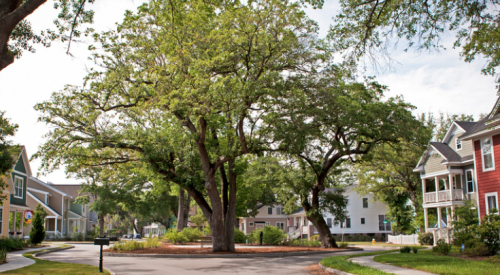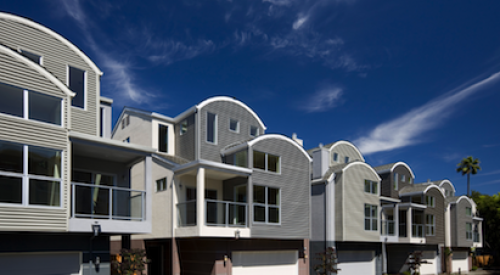Owning real estate today offers its challenges, whether you are a home builder, developer, consumer, investor, or even the bank. Are we at the bottom yet? One thing is for sure — we have entered new waters and there is no looking back. Understanding market dynamics, the competitive environment, and what consumers want for both their community and their home is a must for survival today.
John Burns Real Estate Consulting recently partnered with 30 home builders across the country on a consumer survey on the new-home market, entitled “What Do You Call Home?” Nearly 10,000 people completed the survey, which was designed to help understand consumer sentiment today and what will motivate consumers’ purchase behavior in the future.
The survey results were impressive. Responses came from the majority of new-home locations across the country, and the sample was well diversified among life stages, age groups, incomes, and price ranges. It’s important to note that the survey audience was experienced: The majority of consumers who completed the survey were either visitors shopping for a new home or those who had recently purchased a new home.
Clearly, these consumers want to be heard when it comes to their next home purchase — why else would nearly 10,000 of them spend 20 to 30 minutes taking this 54-question survey? And, more than just being heard, they want a say in these issues. The survey results further validate that consumers continue to be emotionally invested in future homeownership and the choices associated with buying a new home.
The survey results were broken down in three ways: nationally, by region, and by local market. While many of the results vary by region and market, there were some overarching themes that can help builders plan for the future:
1. Consumers understand that it’s a good time to buy a home. Eighty-eight percent of respondents believe today is a good time to buy a home. The results for this question do not vary considerably by consumer group or region. From Generation Y to the Silent Generation and from the Northeast to the Southwest, the great majority of consumers were in agreement.
2. Generation X and the Baby Boomers are the largest buyer segments and are actively shopping today. The sample response is a solid indicator of who is shopping for a home, given the size of the survey response. The survey showed that more than 80 percent of respondents sourced by new-home builders across the nation were either Generation X or Baby Boomers, while only 8 percent of respondents represented in the survey were Generation Y.
3. Generation Y is coming down the pike. Have Millennials rejected homeownership in light of what they have witnessed in the current real estate cycle? Are they all living with their Boomer parents? Are they choosing to rent forever? The answer is no. The majority of Generation Y is not old enough to buy a home, if you consider that age 25 begins the phase of life when young adults have settled into careers, making homeownership more attainable.
Today, Generation Y represents more than 30 percent of the total population. However, only one-third are 25 or older, representing just 10 percent of the overall adult population. The remaining two-thirds of the Generation Y population is between the ages of 12 and 24. As a result, Millennials are less prevalent in the buying population today, but their numbers will be substantial in the coming years.
Generation Y represents 8 percent of the total survey response, which ties closely to their share of the adult population. Only 11 percent of the survey response for Generation Y are living with mom and dad, and only 30 percent are renting. This response does vary somewhat by region and MSA.
In summary, Generation Y will continue to grow over the next decade, but they are currently the minority of the buying population. In the meantime, focus on Generation X and Boomers, as they represent more than 80 percent of your interested buyers.
4. Homeownership and the desire for ownership remain high among home shoppers. There was no evidence in the survey sample of a significant shift toward renting and away from homeownership. In fact, the results showed strong ownership across all generations, age groups, and income ranges. As expected, the highest percentage of renters was among the youngest profiles, while ownership increased with age (and probably accumulated wealth).
Nationally, only 16 percent of respondents rent their primary residence today. A higher percentage of renters were found in the more expensive markets like Southern California, which showed a 22 percent rental rate — the highest among the regions.
Americans still want to own their homes. Among the important reasons to buy, 83 percent call homeownership a personal value. There is little distinction among the generation groups on this point.
5. Consumers say they will move today for the right opportunity, but why aren’t they buying? The survey asked consumers how satisfied they were with their current homes and whether they would be willing to move. Only 29 percent of respondents were so happy with their current home that they had no desire to move. Another 1 percent said that, while they were not completely satisfied with their current home, they had no desire to move, preferring to renovate their home instead. The most interesting response was that the remaining 70 percent said they would move today for the right opportunity. That’s a big number. Given this information, the big question is: What will it take to get home shoppers off the fence and buying in the near future?
The survey asked consumers to rank the most important factors of their next home-buying decision. There were three rivals that consistently surfaced to the top of rankings — no matter the life stage or geographic region. Price and location are the obvious first two rivals, as consumers continue to emphasize the importance of “location, location, location.” In today’s economy, it seems much more like “price, price, price.” Surprisingly, the third rival was “home design.” It was not “size,” “outdoor yard space,” “master plan,” or one of the many other choices that were presented in the survey.
While these three together seem to be logical top choices, consider what has been happening in the market: Builders have been forced to address the first two priorities that consumers want today — affordable pricing and desirable locations. Monthly payments are more affordable than they have been in more than 20 years. Price has been driven down dramatically across the nation, and affordability levels are at their all-time best. In addition, consumers know that today is a good time to buy a home, as pointed out earlier. As for location, the survey showed that more than 80 percent of respondents said they could find new homes in the locations they wanted to live in.
The missing piece of the puzzle is the third rival: design. Can consumers find better design today in locations they want and at the price they can afford? This is the most significant opportunity missing in the market today. As the market forced prices down, many builders shifted their strategies — primarily focusing on price — by either stripping out many of the design elements and innovations found in new housing or reducing the size of their homes.
This is not true for all builders, of course. There are new strategies entering the market focused on smart technologies and green-sensitive designs geared to compete with the resale market, where these features are expensive to add.
While price is one strategy builders can take, design is a strong alternative that does not always need to cost more to produce. The key is spending the time up front and understanding what consumers are looking for.
The big conclusion of the study is that design matters more today than it ever has — no matter the geography or consumer group.
Consider another industry that could benefit from these findings. The auto industry has suffered dramatically over the last several years amid challenging market conditions. Moreover, the U.S. auto manufacturers fell behind in design. What are the solutions? They have two choices to consider: They can strip all of the extra features out of their cars and chase price down to the bottom, or they can re-innovate their designs and give consumers a reason to purchase despite a down economy. Only one of the two choices will give the company a fighting chance. The other will end with disappointing financial results over the long term and destroy their brand over the same period.
The best companies that are thriving today — despite turbulent market conditions — have mastered the best form and function with an attainable consumer price. Many of these great companies do not represent the lowest price in their class. Apple is a model example of mastering this strategy. The company has flourished in a down economy, not by offering cheaper products, but by offering design and innovation that cannot be found elsewhere.
The same solutions apply for the housing industry. Give consumers a compelling reason to buy that is design-driven and builds your brand and profitability at the same time. Do not hold onto yesterday’s design favorites. Do not stop innovating new-home solutions. Good design does not have to cost more. Focus on providing the best form, function, and price. Offer design that consumers cannot find elsewhere.
Home design consistently ranked among consumers’ top priorities for their next home purchase. The design that wins is the one that reflects their personal style; this is more important to them than the lowest possible price. In fact, only 17 percent of the survey respondents ranked “price” as their top priority. What they are willing to pay more for are the features that they select themselves. Furthermore, 89 percent of respondents told us that the ability to customize the home they live in is an important reason to own a home. Consumers will resist a “one-size-fits-all” approach and reward those builders that recognize that, even above a financial investment, a home is a personal and emotional investment.
The survey does not suggest that design is the only answer. However, it does suggest that there is a better way than simply price. Long gone are the days of, “If you build it, they will come.” Consumers are far more discretionary today and are more hesitant to buy without the emotional power of the design they want or the personalization they’re looking for in their next home. Builders must take time to understand what consumers want as part of their planning efforts in order to truly understand the consumer’s mindset and what will motivate them to buy. The survey results underscore that understanding and delivering the right design is as important as establishing the right price in the market. In order to be successful, you cannot afford to miss this important step.
For more details on the survey results, email Mollie Carmichael at mcarmichael@realestateconsulting.com.
Mollie Carmichael is a principal with John Burns Real Estate Consulting, an independent research firm based in Irvine, Calif., focused on providing housing solutions and strategies across the nation. Formerly a VP of strategic marketing for Lennar, Centex Homes, Pulte Homes/Del Webb, and The Irvine Company, Carmichael has more than 21 years of home builder and developer experience. She can be reached at mcarmichael@realestateconsulting.com.













